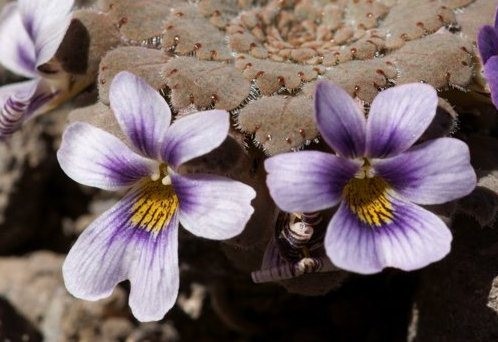The long-spurred violet
(Viola rostrata)

Description
Viola rostrata, commonly called the long-spurred violet, is an herbaceous plant in the violet family (Violaceae). It is native to eastern North America, where it is found in Canada and the United States, primarily in the Northeastern, Midwestern, and Appalachian regions. Its natural habitat is acidic mesic forests, often growing near Tsuga canadensis. It is a stemmed perennial plant. The cauline leaves are simple, toothed, ovate and acute. Basal leaves are cordate and 2–4 cm. It produces flowers in the spring. The flowers are beardless, pale lilac with darker veins forming a darker centre eye. The spur is at least as long as the petal blades. Viola rostrata is known to hybridize with Viola conspersa (American dog-violet) and Viola striata (creamy violet). Viola is a genus of flowering plants in the violet family Violaceae. It is the largest genus in the family, containing between 525 and 600 species. Most species are found in the temperate Northern Hemisphere; however, some are also found in widely divergent areas such as Hawaii, Australasia, and the Andes. Some Viola species are perennial plants, some are annual plants, and a few are small shrubs. Many species, varieties and cultivars are grown in gardens for their ornamental flowers. In horticulture the term pansy is normally used for those multi-colored, large-flowered cultivars which are raised annually or biennially from seed and used extensively in bedding. The terms viola and violet are normally reserved for small-flowered annuals or perennials, including the wild species. Annual or perennial caulescent or acaulescent (with or without a visible plant stem above the ground) herbs, shrubs or very rarely treelets. In acaulescent taxa the foliage and flowers appear to rise from the ground. The remainder have short stems with foliage and flowers produced in the axils of the leaves (axillary). Viola typically have heart-shaped or reniform (kidney-shaped), scalloped leaves, though a number have linear or palmate leaves. The simple leaves of plants with either habit are arranged alternately; the acaulescent species produce basal rosettes. Plants always have leaves with stipules that are often leaf-like. The flowers of the vast majority of the species are strongly zygomorphic with bilateral symmetry and solitary, but occasionally form cymes.
Taxonomic tree:







